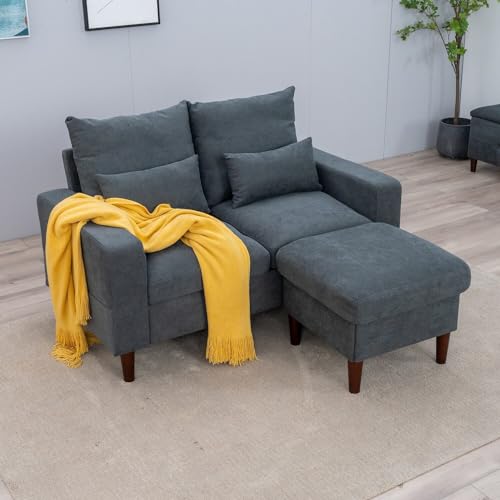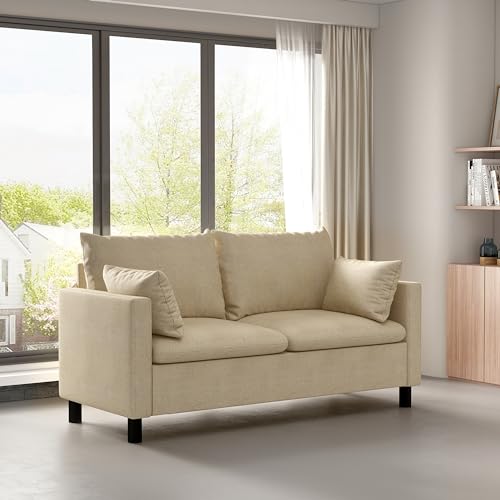Guide To 2 Seater Leather And Fabric Sofa: The Intermediate Guide On 2…
페이지 정보
작성자 Antonia Bingle 작성일 24-12-23 10:10 조회 4 댓글 0본문
 Choosing Between a 2 seater fabric settee two seater fabric sofa uk leather and fabric two seater sofa sofa - stairways.wiki,
Choosing Between a 2 seater fabric settee two seater fabric sofa uk leather and fabric two seater sofa sofa - stairways.wiki,It can be difficult to decide between fabric and leather when you are looking for a new couch. This is especially true if you have little experience with furniture.
If you have children or live in an apartment, the leather option may be a good fit for you. It is easy to clean and looks stunning in a lot of homes.
Comfort
A sofa is the focal point of most people's living spaces and is a significant purchase. You want one that is comfortable to lounge on for a long time and looks good, is in line with your room style and will last for a long time. It isn't easy to choose between fabric and leather but you should consider your lifestyle, budget and other priorities before making a decision.
Leather is a luxurious material that is soft and luxurious and oozes elegance in the home. It is strong, stain resistant, insensitive to pets and children, and will last for a long time if given proper care. However, it could be more expensive upfront and may require regular conditioning to prevent peeling or cracking.
Fabric sofas are available in a broad variety of styles, colors and fabrics. They are cheaper than leather sofas. They are also softer, more welcoming and can be "broken into" right from the beginning. They are susceptible to dust mites and pet hairs, and could require more frequent cleaning. There are now hypoallergenic fabrics and new technologies available.
The life-span of a fabric sofa will depend on the quality of the material however, most fabrics will last for 15 years if they are properly taken care of. Regular vacuuming and deep cleaning will aid in keeping the fabric clean and free of stains and odours. They also can shrink and flatten over time, just as leather. In addition, many couches made of fabric have been treated with chemicals to make them stain-resistant and flame-resistant. These couches release volatile organic chemicals that can cause allergic reactions and alter the quality of air in the indoors.
Durability
When purchasing sofas, we often select fabrics that are extremely durable, as this is important for those with pets and children. You don't want to spend much upfront and then be left with buyer's remorse after the first spill or crowbarred claws. You don't want to buy something cheap that won't hold up to regular use.
 Leather, meanwhile is extremely durable and has incredible tear strength. It can last up to 4 times longer than fabric and it is naturally resistant to cracking, fading and flaking over time. It can be conditioned to replenish its natural oils, and make it look like new.
Leather, meanwhile is extremely durable and has incredible tear strength. It can last up to 4 times longer than fabric and it is naturally resistant to cracking, fading and flaking over time. It can be conditioned to replenish its natural oils, and make it look like new.Fabrics are less expensive and come in a variety of designs, colors, and textures that can be adjusted to any design scheme. They are also less difficult to clean than leather and can withstand a significant amount of wear and tear however they tend to be more susceptible to moisture and can fade over time.
Microfiber is a good choice for its durability and comes in a variety of colours, but it's not as tough as genuine leather and may not be able to take the punishment of scratches. It is still a great choice for families because of its resistance to stains and spills. It's also easy to clean with an aqueous cloth.
Suede is more difficult to clean and repair than leather. It is prone to lose its shape and appear rough if not regularly conditioned. It's also a very thin substance, so it may not be as sturdy as sheepskin leather or cowhide.
Allergens
Fabrics can have a significant effect on allergies. It is crucial to know the way different options work. Fabrics tends to retain allergens like dust mites and pet dander, which can trigger symptoms such as hay fever, asthma, eczema, and rhinitis. These fabrics are perfect for their health.
Leather is, however isn't susceptible to accumulating allergens, and can provide consistent comfort regardless of the season. It can also trigger dermatitis in people who have contact dermatitis or are allergic to chemicals used in tanning. To minimize the risk of skin reactions, it's essential to use products that are vegetable-tanned and to maintain a regular routine for your skin.
Both sofas made of fabric and leather are durable, but the material you choose will have a significant effect on how your couch is able to stand up to wear. A top-quality fabric will not suffer from shrinking or fading and can withstand spills or body oils as well as daily use. Many modern couches come with stain-resistant treatments to make cleaning easy.
It is not possible to completely avoid an allergic reaction to the leather of your couch, but you can help to reduce allergens by keeping an lint-roller in your home and clean regularly your living space. This will help reduce the amount of dust, pet hair, and dust mites on your sofa. If you still suffer from allergies, you can try replacing your sofa with a hypoallergenic one. For instance, a sofa made from synthetic or vinyl is less likely to trap dust mites and pet dander and can help you breathe more easily.
Scratches
When buying a leather sofa, you need to think about how much wear and tear you can anticipate from it. The finish, colour and the quality of the leather are all important factors in how long a sofa will last. It is also important to ensure that it's sturdy enough to withstand spills or other accidents. This can be accomplished by choosing a couch with a strong hardwood frame and high-density foam cushions.
Leather can be scratched for many reasons, including stretching and marking the territory or recovering stress. Scratches are of varying severity. They vary from minor surface scratches, to severe punctures or cuts. Minor scratches can be treated by applying a conditioner for leather to the affected area. This will help restore the balance of oil and moisture in the leather, which will prevent it from drying out and cracking. The amount of damage will determine the kind of treatment needed.
If you have pets, it's recommended to trim their nails on a regular basis as this can aid in preventing scratching on your couch. You can also redirect your cat's scratching habits by offering alternatives to scratching surfaces, such as sisal rope or cardboard. You can also use a pet safe furniture polish which you can apply using a soft, clean cloth.
In addition to cleaning your leather couch regularly, it is also a good idea to keep it out of direct sunlight and sources of heat because this could dry out the leather. This could cause it to split and is often difficult to repair and often requires reupholstery. It is also a good idea to use a conditioner for leather to keep the leather soft.
Smell
Leather couches tend to smell different than fabric sofa 2 seater. It's because it's more porous and can absorb unpleasant odors like smoke, body odor, or food very easily. The good thing is that odors usually fade over time, particularly when you make use of a fragrance-free, non-toxic and free cleaner.
If the smell is strong, it could mean that something is wrong with the foam. This is usually caused by chemical off-gassing from petroleum-based polyurethane. If you're concerned about this, look for couches made of CertiPUR US certified or natural latex foams.
Another way to identify fake leather is to look for bumps or texture on the back of the sofa. This is a clear indication that it's bonded, not genuine top grain leather. You can also conduct an inspection by laying the sofa to one side and looking for any exposed upholstery backing. If you can smell it, it's likely a synthetic material like polyurethane or polyester. These materials will have a distinct scent than leather.
While a leather couch is more likely to be prone to absorbing smells, the most effective way to avoid this is to regularly clean your sofa. This will keep it looking and smelling great and will also stop it from becoming brittle or cracked over the years. Start by vacuuming and dusting your couch and then wiping it clean with a dry cloth and baking soda (a good natural way to remove smells). You should do this at least once every two seater fabric sofa weeks or more to rid your sofa of dust and dirt build up. Then, apply a leather conditioner to keep your sofa's color and texture.
- 이전글 5 Reasons To Be An Online Hob Shop And 5 Reasons To Not
- 다음글 You'll Never Guess This Sofa 2 Seater Fabric's Secrets
댓글목록 0
등록된 댓글이 없습니다.






